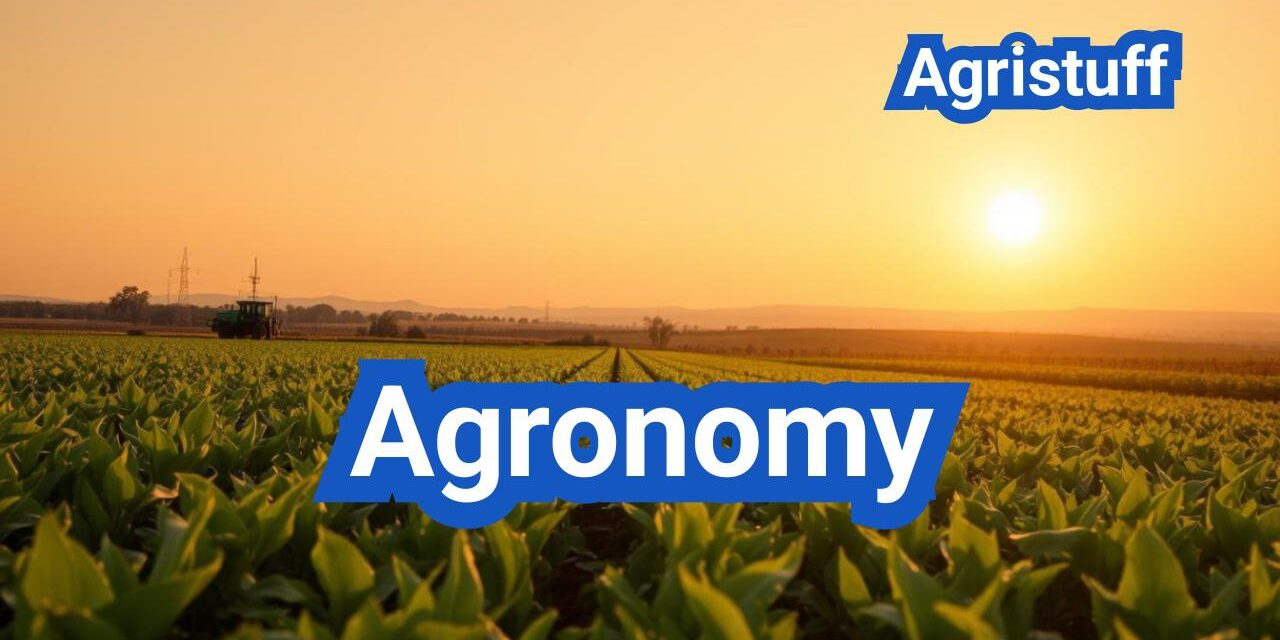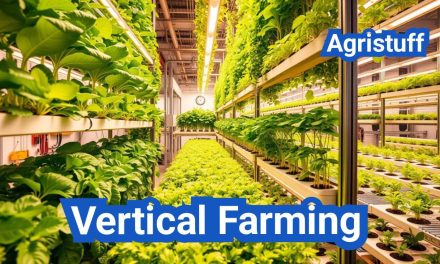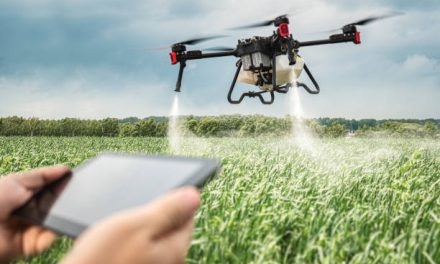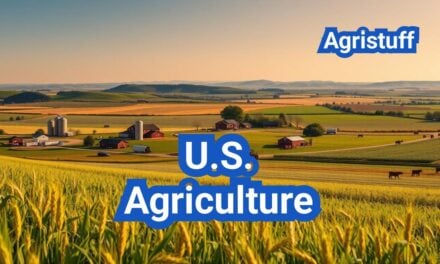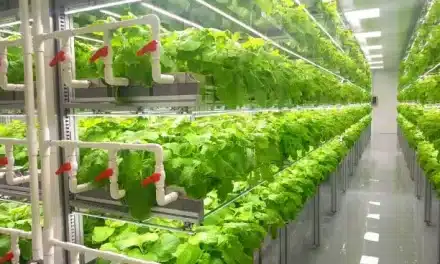Agronomy, the science of soil management and crop production, plays a vital role in modern agriculture. By applying principles from plant and soil sciences, agronomists develop innovative methods to enhance crop yields and improve their quality.
The core principles of agronomy involve understanding the complex interactions between crops, soil, and the environment. This knowledge enables farmers and agricultural practitioners to make informed decisions, optimizing crop production while minimizing environmental impact.
Effective agronomic practices are crucial for achieving higher yields and better crop quality. By embracing these principles, farmers can improve their productivity and contribute to a more sustainable food system.
Key Takeaways
- Understanding the principles of agronomy is essential for modern agriculture.
- Agronomic practices enhance crop yields and quality.
- The science of agronomy involves soil management and crop production.
- Agronomists develop methods to optimize crop production.
- Sustainable agronomic practices minimize environmental impact.
What Is Agronomy: Definition and Importance
Agronomy is the science and practice of producing crops and managing soil to ensure sustainable agricultural production. At its core, agronomy is about applying scientific principles to manage and improve agricultural systems.
The Definition and Scope of Agronomy
Agronomy encompasses a broad range of disciplines, including soil science, plant breeding, and crop management. It involves understanding the complex interactions between plants, soil, water, and the environment to optimize crop production.
The scope of agronomy includes:
- Soil management practices to enhance fertility and structure
- Crop selection and breeding for improved yield and resilience
- Irrigation management to conserve water resources
- Integrated pest management to minimize chemical use
Historical Development of Agronomic Science
Agronomic science has evolved significantly over centuries, from ancient practices based on observation and experience to modern, technology-driven approaches.
Key milestones in the development of agronomic science include:
- The discovery of the importance of crop rotation and soil conservation
- The development of synthetic fertilizers and pesticides
- The introduction of precision agriculture technologies, such as GPS and GIS
- The integration of biotechnology in crop improvement
The Role of Agronomy in Modern Agriculture
Agronomy plays a crucial role in modern agriculture by providing the scientific basis for sustainable and productive farming practices. Agronomists work to improve crop yields, reduce environmental impact, and enhance the resilience of agricultural systems to climate change.
The importance of agronomy is evident in several areas:
- Sustainable production: Agronomic practices help maintain soil health and biodiversity.
- Food security: By improving crop yields and resilience, agronomy contributes to global food security.
- Environmental stewardship: Agronomy promotes practices that reduce the environmental footprint of agriculture.
Core Principles of Agronomy for Crop Production

The foundation of successful crop production lies in the core principles of agronomy, which encompass plant growth, environmental factors, and resource management. These principles are crucial for optimizing crop yields and ensuring sustainable agricultural practices.
Plant Growth and Development Fundamentals
Understanding plant growth and development is vital for effective crop management. Plants require specific conditions to grow, including adequate water, nutrients, and light. The stages of plant growth, from germination to maturity, are influenced by both genetic factors and environmental conditions.
Crop production is significantly affected by the rate of plant growth and development. Factors such as temperature, soil quality, and water availability play a crucial role in determining crop yields. By understanding these fundamentals, farmers can make informed decisions about planting, irrigation, and fertilization.
Environmental Factors Affecting Crop Growth
Environmental factors such as climate, soil type, and weather patterns have a profound impact on crop growth. Temperature and precipitation are particularly important, as they directly affect the rate of growth and development. Extreme weather events, such as droughts or floods, can severely impact crop yields.
Agronomists must consider these environmental factors when developing crop management strategies. By understanding how different factors interact, farmers can implement practices that mitigate potential negative impacts and optimize crop production.
Resource Utilization and Efficiency
Efficient resource utilization is a key principle of agronomy. This involves maximizing the use of inputs such as water, fertilizers, and pesticides while minimizing waste and environmental impact. Techniques such as precision agriculture and integrated pest management can significantly enhance resource efficiency.
By adopting these strategies, farmers can reduce their environmental footprint while maintaining or improving crop yields. This not only benefits the farmer economically but also contributes to sustainable agricultural practices.
How to Assess and Improve Soil Health
Effective soil management begins with a thorough assessment of its health and composition. Soil health is critical for crop productivity and involves understanding its composition, testing, and mapping.
Understanding Soil Composition and Structure
Soil composition refers to the proportion of sand, silt, and clay particles, as well as organic matter and other components. Understanding soil composition is essential for determining its water-holding capacity, aeration, and nutrient supply.
The structure of the soil, on the other hand, refers to the arrangement of these particles. A well-structured soil allows for good drainage, root growth, and water infiltration.
Soil Testing Methods and Interpretation
Soil testing is a crucial step in assessing soil health. It involves collecting soil samples and analyzing them for various physical, chemical, and biological properties.
- pH levels
- Nutrient content (N, P, K)
- Organic matter content
- Soil texture
Interpreting soil test results requires understanding the optimal ranges for different crops and soil types. This information can be used to identify nutrient deficiencies and develop targeted fertilization plans.
Soil Mapping for Field Management
Soil mapping involves creating detailed maps of soil types, properties, and characteristics across a field. Soil mapping can help farmers identify areas with different soil health and tailor their management practices accordingly.
By combining soil testing data with spatial information, farmers can create precision agriculture plans that optimize inputs and reduce waste.
Implementing 4R Nutrient Stewardship in Your Fields

The 4R nutrient stewardship approach offers a comprehensive framework for optimizing fertilizer application in agricultural practices. By adopting the 4R principles—Right Source, Right Rate, Right Time, and Right Place—farmers can enhance nutrient use efficiency, reduce waste, and promote sustainable crop production.
Right Source: Selecting Appropriate Fertilizers
Choosing the right fertilizer source is critical for meeting crop nutrient needs. Different crops require different nutrient profiles, and the selected fertilizer should match these requirements. For instance, a soil test might reveal a deficiency in phosphorus, indicating the need for a phosphorus-rich fertilizer.
Fertilizer Types:
- Synthetic fertilizers
- Organic fertilizers
- Slow-release fertilizers
Each type has its advantages and is suited to different soil and crop conditions. For example, slow-release fertilizers can provide nutrients to crops over an extended period, reducing the need for frequent applications.
Right Rate: Calculating Nutrient Requirements
Determining the right rate of fertilizer application is crucial for avoiding under or over-fertilization. Soil testing and crop nutrient requirements are key factors in calculating the optimal application rate. The goal is to supply the crop with the necessary nutrients without exceeding what the soil can handle.
| Crop | Nutrient Requirement | Recommended Fertilizer Rate |
|---|---|---|
| Corn | High nitrogen | 150 lbs/acre N |
| Soybeans | Low nitrogen, high phosphorus | 50 lbs/acre P2O5 |
Right Time: Timing Applications for Maximum Efficiency
The timing of fertilizer application significantly affects its efficiency. Applying fertilizers at the right time ensures that nutrients are available when crops need them most. This might involve split applications, where fertilizers are applied at different growth stages.
“The key to successful nutrient management is synchronizing fertilizer applications with crop demand.” – Dr. John Smith, Agronomist
Right Place: Placement Methods for Optimal Uptake
Where fertilizers are placed can greatly impact their effectiveness. Methods such as banding, broadcasting, and fertigation offer different advantages depending on the crop, soil type, and equipment available. For example, banding fertilizers near the seed row can improve early-season nutrient uptake.
By implementing the 4R principles, farmers can optimize their fertilizer use, leading to improved crop yields and reduced environmental impact. It’s a step towards more sustainable agricultural practices that benefit both the farm and the environment.
Managing Nitrogen and Phosphorus for Optimal Yields
Nitrogen and phosphorus are two critical nutrients that require careful management to maximize crop production. These nutrients play essential roles in plant growth and development, influencing crop yields and overall farm productivity.
Nitrogen Management Strategies
Effective nitrogen management is crucial for crop production. Strategies include using the right nitrogen sources, applying nitrogen at the correct rate, and timing applications to coincide with crop needs.
Right Source: Selecting the appropriate nitrogen fertilizer is vital. Options include anhydrous ammonia, urea, and ammonium nitrate. Each has its advantages and disadvantages, depending on soil type, climate, and crop requirements.
Right Rate: Calculating the correct nitrogen rate involves considering soil nitrogen levels, crop nitrogen demand, and environmental factors. Tools like soil testing and crop modeling can help determine the optimal rate.
Phosphorus Management Practices
Phosphorus management is equally important, as it plays a key role in root development, flower and fruit formation, and overall plant maturation. Effective phosphorus management involves understanding soil phosphorus levels and applying phosphorus fertilizers judiciously.
- Soil testing to determine phosphorus levels
- Selecting the appropriate phosphorus fertilizer based on soil type and crop needs
- Avoiding over-application to prevent environmental harm
Balancing Nutrient Ratios in Crop Production
Balancing nitrogen and phosphorus ratios is critical for optimal crop production. An imbalance can lead to reduced yields and environmental issues. Crop requirements vary, so understanding the specific needs of your crops is essential.
Nutrient Ratio Management: This involves considering the N:P:K ratio (nitrogen, phosphorus, and potassium) to ensure that crops receive the necessary nutrients in the right proportions. Soil testing and crop monitoring are key tools in this process.
By implementing these strategies, farmers can optimize their nitrogen and phosphorus management, leading to improved crop yields and more sustainable agricultural practices.
Correcting Soil pH Through Effective Liming Practices

Maintaining optimal soil pH through liming is critical for enhancing crop productivity and ensuring sustainable agricultural practices. Soil pH significantly influences nutrient availability, microbial activity, and root growth, all of which are crucial for crop health.
Determining Lime Requirements
To correct soil pH, it’s essential to determine the lime requirements accurately. This involves soil testing to assess the current pH and buffer capacity. The buffer pH test is particularly useful as it estimates the amount of lime needed to achieve the desired pH.
Farmers should consider factors such as soil type, current pH, and the target pH for their specific crops when calculating lime requirements. Consulting with a certified agronomist or soil specialist can provide valuable insights into the most appropriate liming strategy.
Selecting the Right Liming Materials
The choice of liming material depends on several factors, including the neutralizing value, particle size, and purity. Calcitic limestone and dolomitic limestone are common liming materials, with the latter containing magnesium, an essential nutrient for crops.
When selecting a liming material, it’s crucial to consider its effectiveness and cost. High-quality liming materials may be more expensive but are more efficient in correcting soil pH.
Application Methods and Timing
Effective liming requires careful consideration of application methods and timing. Liming materials can be applied using various techniques, including broadcasting and incorporation into the soil. The choice of method depends on the soil type, equipment availability, and the specific liming material.
Timing is also critical; liming should be done well in advance of planting to allow the materials to react with the soil and adjust the pH accordingly. Typically, liming is done during the fall or early spring, depending on the crop rotation and soil conditions.
Monitoring pH Changes Over Time
After liming, it’s essential to monitor soil pH changes over time to ensure that the desired pH is achieved and maintained. Regular soil testing will help in assessing the effectiveness of the liming program and making necessary adjustments.
By understanding and implementing effective liming practices, farmers can improve soil health, enhance crop productivity, and contribute to sustainable agricultural practices.
Sustainable Soil Management Techniques in Agronomy

Soil health is the backbone of sustainable agriculture, and managing it sustainably is key. Sustainable soil management involves practices that enhance soil’s physical, chemical, and biological properties, ensuring long-term productivity and environmental stewardship.
Implementing Cover Crops in Your Rotation
Cover cropping is a powerful technique for improving soil health. By incorporating cover crops into your rotation, you can enhance soil structure, increase organic matter, and reduce erosion. Legume cover crops, such as clover and beans, fix nitrogen, reducing the need for synthetic fertilizers.
Transitioning to No-Till Systems
No-till or reduced-till farming minimizes soil disturbance, preserving soil organic matter and structure. This approach can lead to improved water infiltration, reduced erosion, and increased soil biota. Adopting no-till practices requires careful planning, including managing crop residues and potentially adjusting planting dates.
Designing Effective Crop Rotation Plans
Crop rotation is a fundamental aspect of sustainable soil management. By rotating crops, farmers can break pest and disease cycles, improve soil fertility, and enhance overall soil health. A well-designed rotation plan considers factors like crop selection, soil type, and climate.
| Crop Rotation Benefits | Description | Impact on Soil Health |
|---|---|---|
| Pest and Disease Management | Rotating crops breaks cycles of pests and diseases. | Reduces the need for pesticides, promoting a healthier soil ecosystem. |
| Soil Fertility Improvement | Including legumes in rotation fixes nitrogen. | Enhances soil fertility, reducing reliance on synthetic fertilizers. |
| Soil Structure Enhancement | Diverse root systems improve soil structure. | Increases water infiltration and aeration, supporting soil biota. |
By implementing these sustainable soil management techniques, farmers can improve soil health, increase crop yields, and contribute to a more sustainable agricultural system.
Developing an Integrated Pest Management Program

Developing a comprehensive integrated pest management (IPM) program involves understanding the complex interactions between pests, crops, and the environment. This approach is crucial for maintaining crop health, reducing losses due to pests, and minimizing environmental impact.
Scouting and Monitoring Techniques
Effective scouting and monitoring are the foundation of any IPM program. Regular field inspections help identify pest issues early, allowing for timely interventions. Techniques include visual inspections, using traps, and employing technology such as drones and satellite imaging.
Economic Thresholds for Treatment Decisions
Determining economic thresholds is critical for making informed treatment decisions. This involves assessing the pest population level at which the cost of control equals the value of the damage prevented. By understanding these thresholds, farmers can avoid unnecessary chemical applications, reducing costs and environmental impact.
| Pest | Economic Threshold | Control Measure |
|---|---|---|
| Aphids | 5 per plant | Insecticidal soap |
| Whiteflies | 10 per leaf | Biological control agents |
| Caterpillars | 2 per square meter | Bt toxin |
Cultural and Biological Control Methods
Cultural controls involve modifying agricultural practices to prevent pest establishment or reduce pest pressure. Examples include crop rotation, sanitation, and using resistant cultivars. Biological controls utilize natural enemies of pests, such as predators, parasites, and pathogens, to manage pest populations.
- Crop rotation to break pest cycles
- Sanitation to remove infested plants
- Use of resistant crop varieties
- Introduction of beneficial insects
Herbicide Resistance Management Strategies
Managing herbicide resistance is a critical component of IPM. Strategies include rotating herbicides with different modes of action, using herbicide mixtures, and integrating non-chemical control methods. Monitoring for resistance and adjusting management practices accordingly are essential for sustaining the effectiveness of herbicides.
By adopting a comprehensive IPM program, farmers can improve crop yields, reduce chemical usage, and contribute to a more sustainable agricultural system.
Adopting Precision Agriculture Technologies
With the help of precision agriculture, farmers can now make data-driven decisions to improve their farming practices. Precision agriculture involves the use of advanced technologies such as GPS, GIS, and other tools to optimize crop production and reduce waste.
Getting Started with GPS and GIS Systems
GPS and GIS systems are fundamental components of precision agriculture. GPS (Global Positioning System) provides location information, while GIS (Geographic Information System) analyzes and displays geographically referenced data.
To get started, farmers should:
- Invest in a reliable GPS receiver
- Choose a GIS software that fits their needs
- Collect and analyze data on soil types, moisture levels, and crop yields
Implementing Variable-Rate Application
Variable-rate application (VRA) allows farmers to apply inputs such as fertilizers and pesticides at varying rates across a field. This technique optimizes crop production and reduces environmental impact.
| Benefits of VRA | Description |
|---|---|
| Reduced Input Costs | Applying inputs only where needed |
| Increased Crop Yields | Optimizing input application for better crop health |
| Environmental Benefits | Minimizing the overuse of chemicals and fertilizers |
Setting Up and Calibrating Yield Monitors
Yield monitors measure the quantity of crop harvested, providing valuable data for future decision-making. To set up a yield monitor, farmers should follow the manufacturer’s instructions and calibrate it regularly to ensure accuracy.
Analyzing Field Data for Decision Making
The data collected from precision agriculture technologies must be analyzed to make informed decisions. Farmers can use GIS software to analyze yield data, soil moisture levels, and other factors to optimize their farming practices.
By adopting precision agriculture technologies, farmers can improve crop yields, reduce waste, and promote sustainability in their farming practices.
Optimizing Irrigation Through Scientific Scheduling

Irrigation scheduling, when done scientifically, can lead to substantial improvements in water conservation and crop yields. Optimizing irrigation involves understanding the complex interactions between crop water requirements, soil moisture levels, and evapotranspiration rates.
Calculating Crop Water Requirements
Calculating crop water requirements is a fundamental step in irrigation scheduling. It involves determining the amount of water needed by the crop at different growth stages. Factors such as crop type, growth stage, and weather conditions play a crucial role in this calculation.
- Crop type and its water requirements
- Growth stage and its impact on water needs
- Weather conditions, including temperature, humidity, and wind speed
Using Evapotranspiration (ET) Data for Scheduling
Evapotranspiration (ET) data is critical for accurate irrigation scheduling. ET represents the total water lost through evaporation from the soil and transpiration from the plants. Using ET data helps in estimating the crop’s water requirements more accurately.
ET data can be obtained from:
- Weather stations equipped with ET measurement tools
- Remote sensing technologies that estimate ET over larger areas
- Penman-Monteith equation, a widely used method for calculating ET
Soil Moisture Monitoring Methods
Soil moisture monitoring is essential for effective irrigation management. It helps in determining the current moisture levels in the soil, thereby guiding irrigation decisions.
Some common soil moisture monitoring methods include:
- Gravimetric method, which involves physically measuring soil moisture
- Tensiometers, which measure soil water tension
- Capacitance probes, which estimate soil moisture based on dielectric properties
Water Conservation Techniques
Implementing water conservation techniques is vital for sustainable irrigation practices. These techniques not only help in reducing water waste but also contribute to environmental sustainability.
Effective water conservation techniques include:
- Drip irrigation, which delivers water directly to the root zone
- Precision irrigation, which involves applying water based on crop needs
- Cover cropping and mulching, which help in reducing soil evaporation
By adopting these scientific irrigation scheduling practices, farmers can significantly improve water use efficiency, reduce environmental impact, and enhance crop productivity.
Implementing Climate-Smart Agriculture Practices

Implementing climate-smart agriculture practices is crucial for building resilient cropping systems and mitigating environmental impact. Climate-smart agriculture involves practices that enhance resilience and reduce emissions, making it a vital strategy for sustainable farming.
Building Resilient Cropping Systems
Building resilient cropping systems is a cornerstone of climate-smart agriculture. This involves diversifying crop rotations, using drought-tolerant varieties, and implementing conservation agriculture practices. By adopting these strategies, farmers can reduce the vulnerability of their crops to climate-related stresses.
Diversification is key to resilience. By growing a variety of crops, farmers can spread risk and improve soil health. For instance, incorporating legumes into rotations can enhance soil nitrogen, reducing the need for synthetic fertilizers.
Carbon Sequestration Techniques
Carbon sequestration is another critical aspect of climate-smart agriculture. Techniques such as agroforestry, where trees are integrated into agricultural landscapes, can significantly enhance carbon storage. Additionally, practices like cover cropping and reduced tillage help build soil organic matter, sequestering carbon from the atmosphere.
“Soil carbon sequestration has the potential to offset up to 20% of global greenhouse gas emissions.” –
Source: IPCC Report on Climate Change and Land
Adapting Management to Weather Patterns
Adapting management practices to changing weather patterns is essential for maintaining productivity. This includes using climate information and forecasts to inform decisions on planting, irrigation, and harvesting. By being proactive, farmers can minimize losses and capitalize on favorable conditions.
- Using weather forecasts to plan planting and harvesting
- Implementing irrigation management based on soil moisture monitoring
- Adjusting fertilizer application based on weather predictions
Reducing Greenhouse Gas Emissions
Reducing greenhouse gas emissions is a critical goal of climate-smart agriculture. Practices such as precision agriculture, which optimizes the use of inputs like fertilizers and water, can significantly reduce emissions. Additionally, the use of renewable energy sources on farms, such as solar or biogas, can further decrease the carbon footprint of agricultural operations.
By embracing climate-smart agriculture practices, farmers can contribute to a more sustainable food system while enhancing their resilience to climate change.
Conducting On-Farm Research and Trials

Systematic on-farm trials provide valuable insights into the effectiveness of various agronomic practices. By conducting research on their own farms, agricultural professionals can make informed decisions that enhance productivity and sustainability.
Designing Effective Strip Trials
Strip trials are a practical method for comparing different agronomic practices or products within a field. To design effective strip trials, it’s essential to:
- Identify the variables to be tested
- Ensure adequate replication to account for field variability
- Use consistent management practices across the trial area
- Collect accurate data on the variables being tested
As noted by a leading agronomic expert, “Strip trials allow farmers to evaluate new practices or products in a controlled, yet real-world, environment.”
“The beauty of strip trials lies in their simplicity and the direct applicability of the results to farm management decisions.”
Data Collection Methods and Tools
Accurate data collection is critical to the success of on-farm trials. Methods may include:
- Manual measurements of crop height, density, or yield
- Use of precision agriculture tools like yield monitors or soil sensors
- Drones or satellite imagery for remote sensing
Precision agriculture technologies have significantly enhanced the ability to collect detailed data, enabling more precise analysis and decision-making.
Analyzing and Interpreting Trial Results
Once data is collected, it must be analyzed to draw meaningful conclusions. This involves:
- Cleaning and organizing the data
- Applying statistical methods to identify significant differences
- Interpreting the results in the context of the farm’s specific conditions
Effective analysis requires a combination of technical knowledge and practical experience. It’s also important to consider the economic implications of the findings.
Implementing Findings in Field Operations
The ultimate goal of on-farm research is to inform management decisions. This may involve:
- Adjusting input rates or application timing based on trial results
- Adopting new practices or products that have shown promise
- Scaling up successful trials to larger areas of the farm
By integrating the insights gained from on-farm trials, farmers can optimize their operations, improve efficiency, and enhance sustainability.
Accessing USDA and NRCS Programs for Agronomic Support

Enhancing agronomic practices is made more accessible through various programs and services offered by the USDA and NRCS. These organizations provide critical support to farmers, helping them improve crop yields, reduce environmental impact, and enhance overall farm sustainability.
Navigating EQIP and Other Cost-Share Programs
The Environmental Quality Incentives Program (EQIP) is a key initiative by the NRCS that provides financial and technical assistance to farmers. It helps implement conservation practices that improve soil health, water quality, and overall environmental stewardship.
Key Benefits of EQIP:
- Financial assistance for conservation practices
- Technical support for implementing best management practices
- Enhanced environmental stewardship
Using Web Soil Survey (WSS) for Field Planning
Web Soil Survey (WSS) is an online tool provided by the NRCS that offers detailed soil data, crucial for effective field planning. By understanding soil composition and characteristics, farmers can make informed decisions about crop selection, irrigation, and nutrient management.
How to Use WSS:
- Access the WSS website and create an account
- Enter your farm’s location and generate a soil map
- Analyze soil data to inform your agronomic practices
Leveraging NASS Quick Stats for Market Decisions
NASS Quick Stats is a database maintained by the USDA’s National Agricultural Statistics Service, providing a wealth of agricultural data. Farmers can use this information to make informed market decisions, understand trends, and plan production accordingly.
| Data Category | Description | Usefulness to Farmers |
|---|---|---|
| Crop Production | Data on crop yields, acres harvested | Helps in planning and predicting market trends |
| Market Trends | Historical and current market data | Informs decisions on pricing and production levels |
| Agricultural Economics | Data on agricultural inputs and outputs | Assists in budgeting and financial planning |
Working with Local Extension Services
Local extension services play a vital role in providing farmers with access to research-based information and technical assistance. They can offer guidance on best practices, help with soil testing, and provide insights into local market conditions.
Benefits of Local Extension Services:
- Personalized advice tailored to local conditions
- Access to workshops and training programs
- Assistance with implementing new technologies and practices
Professional Development Through the American Society of Agronomy
The American Society of Agronomy (ASA) offers a wide range of professional development opportunities for agronomists looking to enhance their skills and knowledge. As the world’s largest professional organization for agronomists, the ASA is dedicated to supporting the advancement of the field through education, certification, and research.
Becoming a Certified Crop Adviser
One of the prestigious certifications offered by the ASA is the Certified Crop Adviser (CCA) program. This certification is a mark of excellence, demonstrating that an individual has the necessary knowledge and skills to provide effective advice on crop management. To become a CCA, professionals must meet specific educational and experiential requirements and pass a comprehensive exam. As Luther Smith, ASA’s Chief Executive Officer, notes, “The CCA certification is a testament to an adviser’s expertise and commitment to staying current with the latest agronomic practices.”
“The CCA program has been instrumental in enhancing my career by providing a recognized credential that demonstrates my expertise in crop advising.” –
Jane Doe, Certified Crop Adviser
Continuing Education Opportunities
The ASA provides numerous continuing education opportunities for agronomists, including conferences, workshops, and online courses. These programs cover a wide range of topics relevant to the field, from soil science and nutrient management to precision agriculture and climate-smart practices. By participating in these educational events, professionals can stay updated on the latest research and technologies, enhancing their ability to provide effective solutions for farmers and agricultural businesses.
- Annual Meetings and Conferences
- Specialty Conferences on topics like precision agriculture
- Webinars on emerging issues in agronomy
- Online Courses on various agronomic topics
Networking with Fellow Agronomists
Networking is a crucial aspect of professional development, and the ASA facilitates this through its various programs and events. By connecting with fellow agronomists, professionals can share knowledge, collaborate on research projects, and explore new career opportunities. The ASA’s networks include regional branches, specialty groups, and online forums, providing multiple avenues for engagement.
Accessing Research and Publications
The ASA is a leading source of research and publications in the field of agronomy. Members have access to a wealth of information through the organization’s journals, books, and online resources. The ASA publishes several prestigious journals, including the Agronomy Journal, which features cutting-edge research on various aspects of agronomy. Access to this research is invaluable for professionals looking to stay at the forefront of their field.
By leveraging the resources and opportunities provided by the American Society of Agronomy, professionals in the field can significantly enhance their careers and contribute to the advancement of agronomic science.
Putting Agronomic Principles into Practice
Agronomic principles are the foundation of sustainable and productive agriculture. By understanding and applying these principles, farmers and agricultural professionals can optimize crop production, reduce environmental impact, and improve resource efficiency.
The practices discussed, from soil health assessment and 4R nutrient stewardship to precision agriculture and climate-smart agriculture, all contribute to a more resilient and productive agricultural system. Implementing these agronomy practices effectively requires a comprehensive approach that considers the complex interactions between soil, plants, and the environment.
By integrating agronomic principles into daily operations, agricultural professionals can make informed decisions that enhance crop yields, reduce waste, and promote sustainable agriculture. As the global population continues to grow, the importance of applying these principles will only continue to increase, making it crucial for the future of food security and environmental stewardship.
FAQ
What is agronomy?
Agronomy is the science and practice of soil management and crop production. It involves the application of various principles and practices to optimize crop yields, improve soil health, and reduce environmental impact.
What is the importance of agronomy in modern agriculture?
Agronomy plays a crucial role in modern agriculture by providing the knowledge and techniques necessary to optimize crop production, improve soil health, and reduce environmental degradation. It helps farmers make informed decisions about crop selection, soil management, and resource utilization.
What are the core principles of agronomy?
The core principles of agronomy include understanding plant growth and development, managing environmental factors that affect crop growth, and optimizing resource utilization. These principles guide agronomic practices such as soil testing, fertilizer application, and irrigation management.
How can I assess and improve soil health?
Soil health can be assessed through soil testing, which involves analyzing soil composition, structure, and nutrient content. Improving soil health can be achieved through practices such as adding organic matter, using cover crops, and implementing conservation tillage.
What is 4R nutrient stewardship?
4R nutrient stewardship is an approach to fertilizer application that involves selecting the right source, applying the right rate, timing applications at the right time, and placing fertilizers in the right place. This approach helps optimize fertilizer use and reduce environmental impact.
How can I manage nitrogen and phosphorus for optimal yields?
Managing nitrogen and phosphorus involves understanding crop nutrient requirements, soil testing, and applying fertilizers at the right rate and time. It also involves using conservation practices such as cover crops and buffer strips to reduce nutrient loss.
What is the role of liming in soil management?
Liming is used to correct soil pH by applying limestone or other liming materials. It helps improve soil fertility, reduce soil acidity, and promote healthy crop growth.
What are some sustainable soil management techniques?
Sustainable soil management techniques include using cover crops, transitioning to no-till or reduced-till systems, and designing effective crop rotation plans. These practices help improve soil health, reduce erosion, and promote biodiversity.
How can I develop an integrated pest management program?
Developing an integrated pest management program involves scouting and monitoring pests, using economic thresholds to guide treatment decisions, and implementing cultural and biological controls. It also involves managing herbicide resistance through practices such as crop rotation and using multiple modes of action.
What are the benefits of precision agriculture?
Precision agriculture involves using technologies such as GPS, GIS, and yield monitoring to optimize crop production and reduce waste. It helps farmers make data-driven decisions, improve efficiency, and reduce environmental impact.
How can I optimize irrigation through scientific scheduling?
Optimizing irrigation involves calculating crop water requirements, using evapotranspiration data to guide scheduling, and monitoring soil moisture. It also involves implementing water conservation techniques such as drip irrigation and mulching.
What is climate-smart agriculture?
Climate-smart agriculture involves building resilient cropping systems, sequestering carbon, adapting to weather patterns, and reducing greenhouse gas emissions. It helps farmers mitigate the impacts of climate change and promote sustainable agriculture practices.
How can I access USDA and NRCS programs for agronomic support?
USDA and NRCS programs can be accessed through local USDA service centers and NRCS offices. Programs such as EQIP and CSP provide financial and technical assistance for conservation practices, while Web Soil Survey and NASS Quick Stats provide valuable data and resources for farmers.
What are the benefits of becoming a certified crop adviser?
Becoming a certified crop adviser involves meeting educational and experience requirements, passing a certification exam, and maintaining certification through continuing education. It demonstrates expertise and commitment to providing high-quality advice to farmers and agricultural professionals.
How can I stay up-to-date with the latest developments in agronomy?
Staying up-to-date with the latest developments in agronomy involves participating in continuing education programs, attending conferences and workshops, and accessing research and publications through organizations such as the American Society of Agronomy.
Conclusion of: Agronomy Explained
What is agronomy—and why it matters now
Agronomy is the field-based science that integrates soils, crops, climate, and management so growers can raise yields sustainably and profitably; in practice, agronomy connects research to everyday decisions on seed, nutrients, water, and protection. American Society of Agronomy – What is Agronomy?
The U.S. context: scale, markets, and decisions
In the United States, agronomy translates market signals and weather risk into practical choices for corn, soybeans, wheat, cotton, and specialty field crops, helping farms navigate input costs, labor, and price cycles while staying competitive. USDA ERS – Farm Sector at a Glance
The agronomy systems approach
Successful agronomy follows a systems approach: begin with soil condition and local climate, match crop genetics to fields, then align fertility, irrigation, and crop protection with measurable goals so every pass supports yield stability and ROI. USDA Farmers.gov – Soil Health Practices
Soil health is the foundation of agronomy
Core agronomy principles—keeping soil covered, minimizing disturbance, maximizing biodiversity, and maintaining living roots—improve infiltration, structure, and nutrient cycling, which buffers fields against droughts and intense rainfall. USDA NRCS – Soil Health Principles
Map and test before you manage
Practical agronomy starts with maps and tests: use soil surveys, grid/zone sampling, and pH/CEC data to reveal variability, then target lime, fertility, and hybrids by zone to raise whole-farm performance instead of over-averaging. USDA NRCS – Web Soil Survey
Fertility in agronomy: the 4R framework
Modern agronomy leans on 4R Nutrient Stewardship—right source, right rate, right time, right place—to boost nutrient use efficiency, protect water, and support consistent yields across wet and dry seasons. 4R Nutrient Stewardship – The 4Rs
Plan nutrients with standards and soil tests
Applied agronomy builds a nutrient plan from current soil tests, realistic yield goals, in-season tissue checks, and field history, aligning timing and placement with conservation standards to reduce loss and improve margins. USDA NRCS – Conservation Practice Standards
Crop rotation is agronomy’s risk reducer
Diverse rotations are a classic agronomy tool: they lower disease pressure, disrupt insect and weed cycles, balance nutrient supply, and spread labor, contributing to steadier yields over time. Ohio State Extension – Crop Rotation Benefits
Cover crops: the multipurpose agronomy tool
When selected and timed well, cover crops enhance agronomy by adding organic matter, protecting soil, scavenging residual nutrients, and suppressing early-season weeds before cash crops take over. SARE – Cover Crops Resource Hub
Tillage and residue: manage, don’t pulverize
Conservation and no-till systems help agronomy goals by preserving aggregates, maintaining residue cover, saving fuel and passes, and supporting biological activity—provided fertility and weed strategies are tuned for higher residue. Purdue Extension – Conservation Tillage Overview
Water management: schedule irrigation with data
Irrigation-aware agronomy uses evapotranspiration estimates, soil moisture sensors, and crop stage to schedule sets, aiming for uniform application and timely refills that prevent leaching while protecting grain fill. Colorado State Extension – Irrigation Scheduling
Integrated Pest Management (IPM) anchors protection
Field-smart agronomy prioritizes IPM: correct pest ID, scouting and thresholds, cultural/biological tactics first, and targeted chemistries when warranted to safeguard yield while delaying resistance. Cornell CALS – What is IPM?
Weed resistance: diversify modes and tactics
Resilient agronomy stacks tactics—residual herbicides, rotated modes of action, narrow rows, competitive hybrids, stale seedbeds, and cover crops—to reduce the selection pressure that drives herbicide resistance. University of Nebraska–Lincoln CropWatch – Herbicide Resistance Basics
Precision agronomy: measure, map, and manage variability
Precision agronomy—GPS guidance, yield monitors, soil EC maps, satellite imagery, and variable-rate prescriptions—lets managers treat zones differently on purpose, improving input efficiency and whole-farm returns. USDA ERS – Precision Agriculture
Data for benchmarking and planning
Data-driven agronomy compares field results to county and state trends, tracks input costs and margins, and validates changes with side-by-side strips so practices scale only when they pay. USDA NASS – Quick Stats Database
Climate-smart agronomy: adapt to extremes
Hotter spells, erratic rainfall, and late frosts require agronomy strategies that emphasize water-holding soils, stress-tolerant genetics, diversified rotations, and contingency plans for delayed planting. USDA Climate Hubs – Adaptation Resources
Use drought and weather intelligence
Proactive agronomy uses drought maps, seasonal outlooks, and in-season radar to adjust populations, maturities, nitrogen timing, and irrigation sets when moisture becomes the limiting factor. U.S. Drought Monitor
Scouting and on-farm trials keep agronomy honest
Disciplined agronomy builds a cadence of weekly scouting and simple A/B strip trials with notes, photos, and weigh-wagon results to confirm ROI before expanding a new practice farm-wide. Crop Protection Network – Crop Scouting Guide
Leverage cost-share and technical support
Strategic agronomy often pairs with cost-share for cover crops, nutrient management, buffers, and no-till, reducing risk during adoption while adding expert planning support from conservation staff. USDA NRCS – EQIP Program
Putting it all together: a practical agronomy checklist
High-performing agronomy is iterative: map and sample soils; pick genetics by field; write a 4R fertility plan; build a season-long weed program; place cover crops where they fit; fine-tune irrigation; scout weekly; and grade decisions post-harvest with data. USDA Farmers.gov – Soil Health Practices
Final thought
Treat agronomy as a continuous, data-driven process—not a one-time recipe—and you’ll build better soils, stabilize yields, and strengthen profitability across seasons and price cycles. American Society of Agronomy – Home
Sources & References
- American Society of Agronomy – What is Agronomy?
- USDA NRCS – Soil Health Principles
- USDA NRCS – Web Soil Survey
- Ohio State Extension – Crop Rotation Benefits
- SARE – Cover Crops Resource Hub
- Purdue Extension – Conservation Tillage Overview
- USDA NASS – Quick Stats Database
- USDA Climate Hubs – Adaptation Resources
- U.S. Drought Monitor
- USDA NRCS – EQIP Program
- USDA Farmers.gov – Soil Health Practices
- American Society of Agronomy – Home

